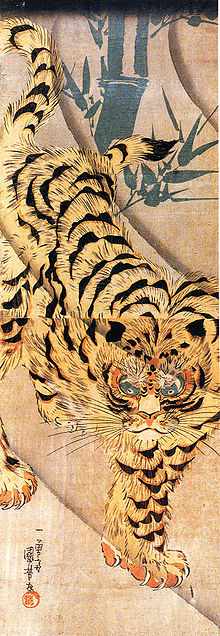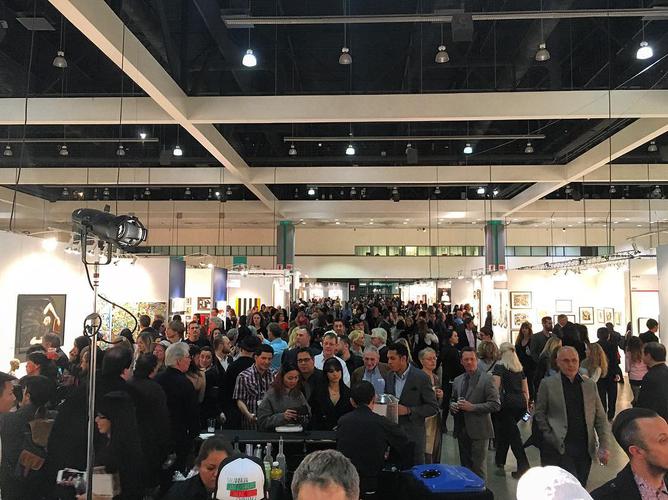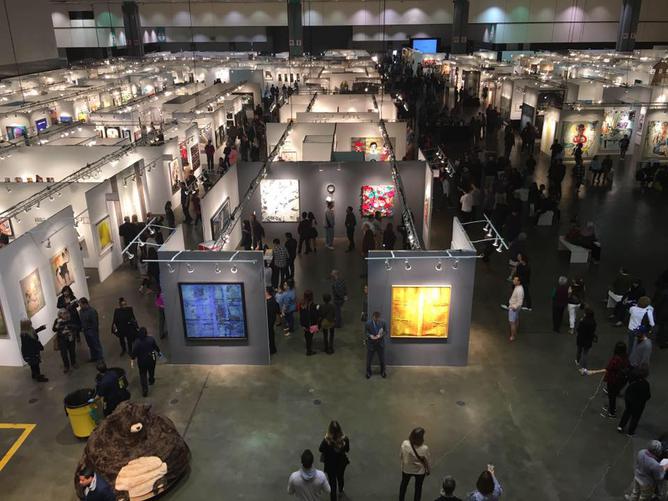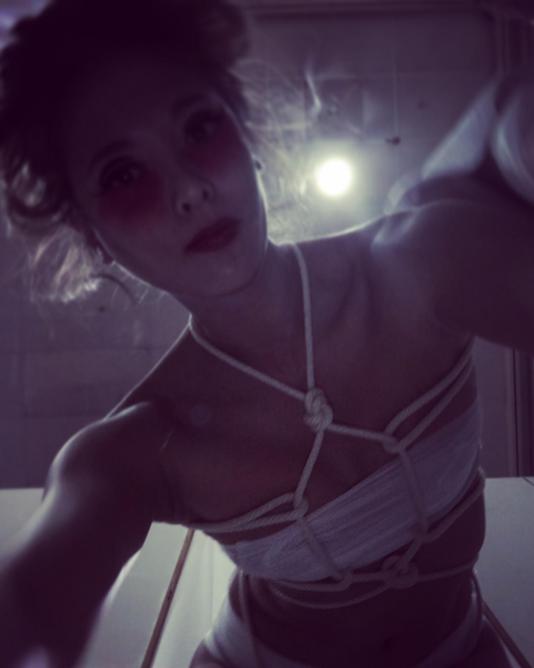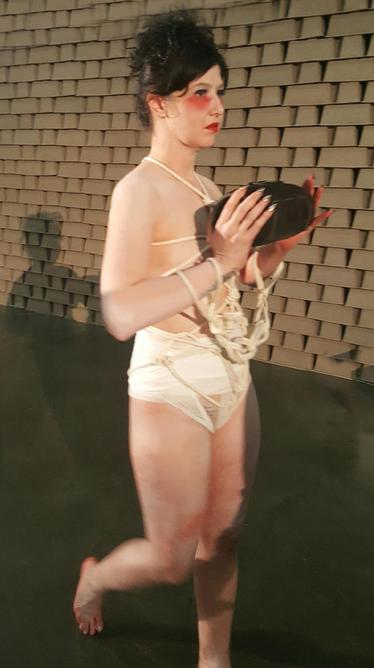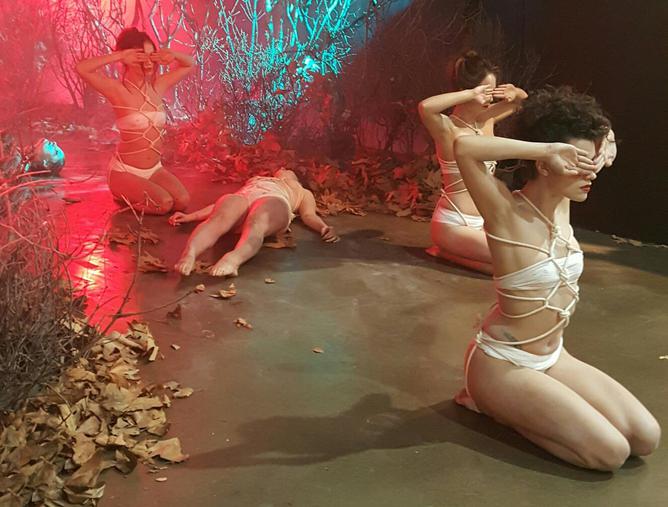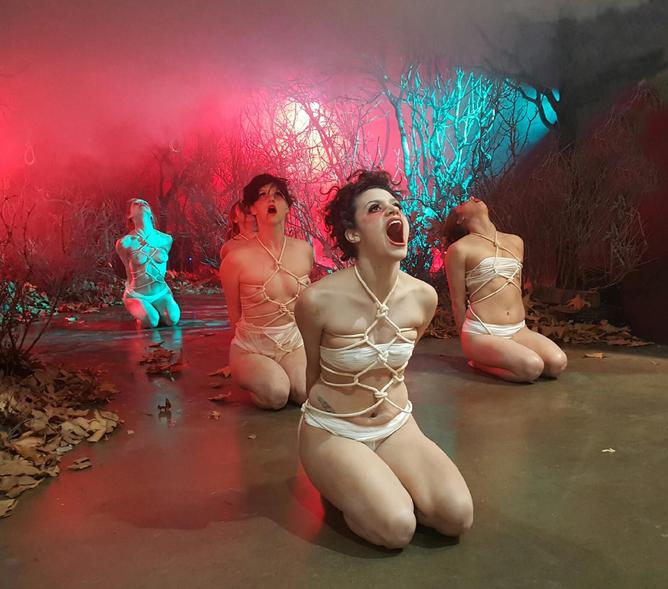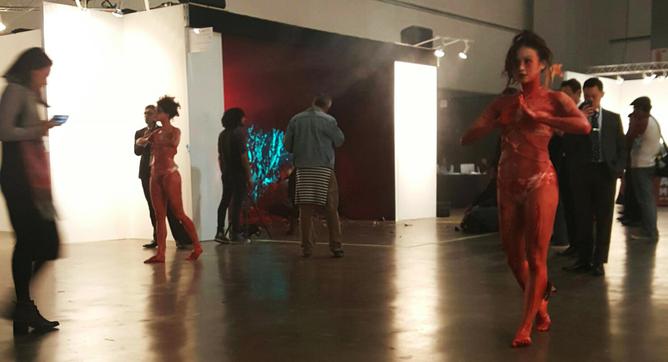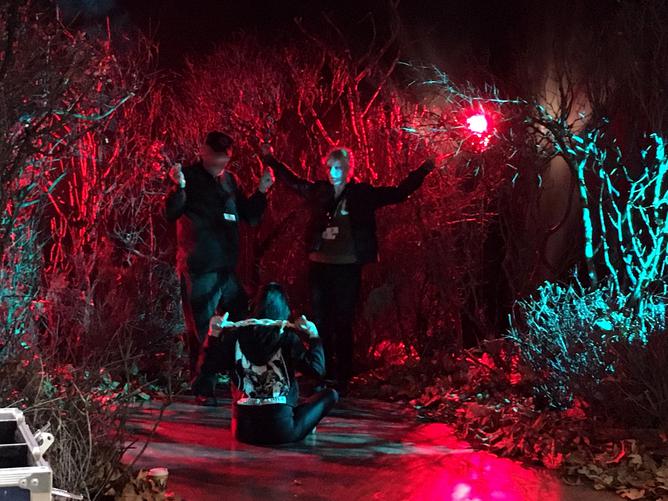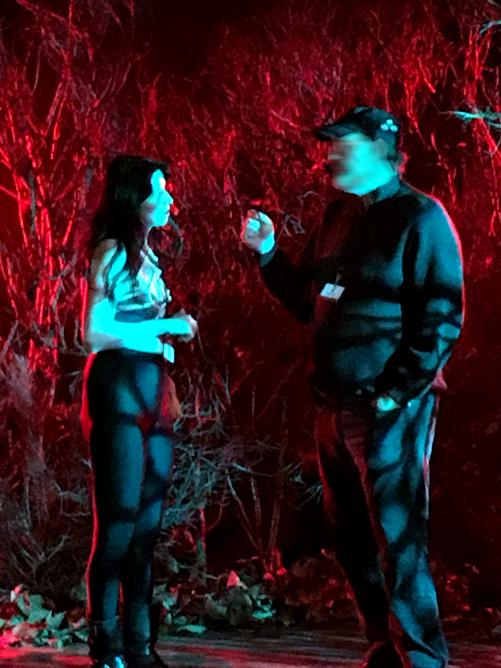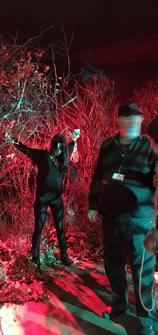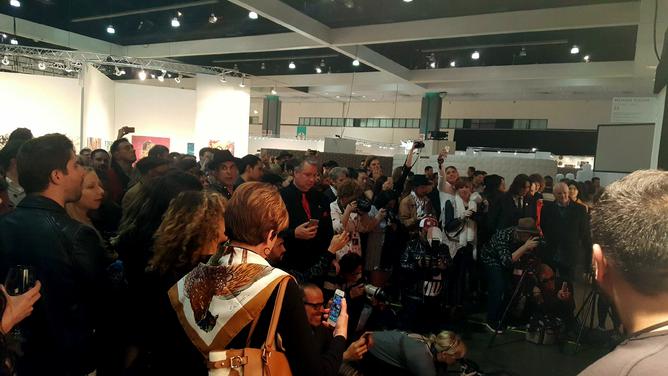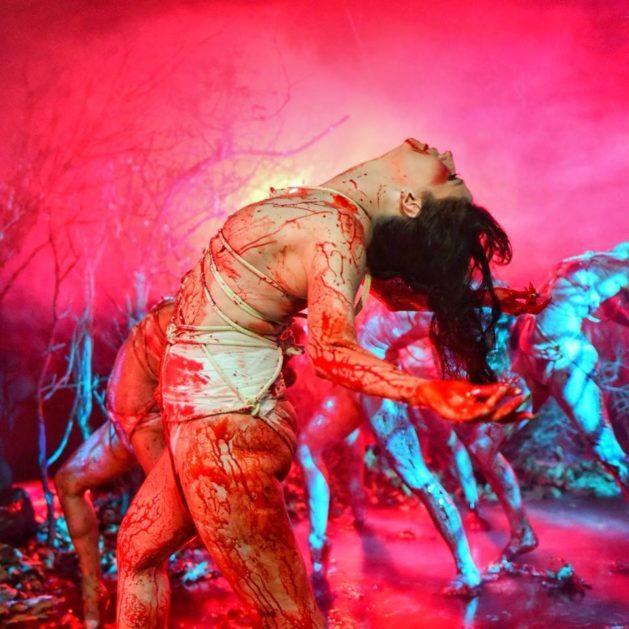Or everything you always wanted to know about Japanese erotic bondage when you suddenly realized that you didn't speak Japanese
The Beauty of Kinbaku
Kinbaku
and Art
Please note: no part of these articles may be reproduced by any means without the express written consent of the author or the publisher, King Cat Ink.
Chapter Thirteen
Kinbaku and Art-American Bakushi Part 7 - Master “K” collaborates with internationally renowned, LA based artist Melanie Pullen for the 2017 LA Art Show!
by Master “ K”
This page is best viewed on Google Chrome.
Please join me next time as we continue our exploration into the fascinating subject of “Kinbaku and Art!”
A final complexity was that much more important than the design of the harnesses was the ability of each dancer to be able to move and perform at their best. This meant needing to adjust each pattern to the comfort and movement requirements of the dancers. This required a fair amount of rehearsal and many small adjustments.
Her most widely acclaimed works are “High Fashion Crime Scenes” (2003-2016) and “Violent Times” (a Five Part War Project - 2008-2016).
Recently, I was extremely flattered to be asked to collaborate with the internationally known, LA based artist and photographer Melanie Pullen on a new installation/performance piece for this year’s prestigious 2017 LA Art Show.
Cover of Melanie Pullen's photo book "High Fashion Crime Scenes" (2005)
Behind the scenes still of the 3 story suspension - 4 - take off.
Melanie Pullen was born in 1975 in the West Village of New York City and began her artistic career as a child when she would occasionally perform with local artists such as the world famous tightrope walker Philip Pettit and spend weekends with family friends such as Andy Warhol and legendary artist and cartoonist Shel Silverstein with whom she built cardboard houses.
As the previous chapters in the “American Bakushi” series have shown, there are many ways that the art of Japanese rope is now being used and appreciated in the West.
The set under construction.
Dancers pre-show: Kabuki makeup and Kinbaku.
Discussing the choreography and rope with (L to R) Master "K", choreographer Rose Noir and artist Melanie Pullen.
The crowd at the opening night performance.
LA Art Show exhibits and crowds.
Melanie Pullen's "Violent Times" in performance at the 2017 LA Art Show.
“High Fashion Crime Scenes” is a remarkably creative portfolio of over one-hundred photographs based on NYPD and LAPD crime scene files. To create it Pullen employed the services of up to 80 crew members and models per picture. The series also used over $13 million worth of clothing and accessories.
Both “Violent Times” and “High Fashion Crime Scenes” were works that took more than 15 years to complete and employed hundreds of models and technicians.
During her research into crime-scene photography Pullen became haunted by war imagery. This became Pullen’s inspiration for “Violent Times,” her most recent and elaborate series to date.
For this year’s LA Art Show Pullen created an installation performance piece on this same theme, also entitled “Violent Times.”
According to Pullen, “The performance ‘Violent Times’ is an abstract interpretation that explores both the ceremonial and crude aspects of violence, inherent in both nature and the human condition.”
In essence Pullen’s new work questions the effects violence has on the viewer in contemporary culture.
As part of the performance piece I was asked to create several Kinbaku designs both as costumes for the performers and as parts of the set to contribute to the symbolic imagery of imprisonment and torture that artist Pullen wanted to portray.
In addition to doing several small rope sculptures to add to the set I was asked to create several body harness costumes for the up to five dancers who take part in the performance. The dancers wear a Kabuki style white makeup so Japanese rope stylings with white cord seemed appropriate. In order to present a bold graphic design I decided to return to the basics and did body harnesses based on the famous Kikkou (tortoiseshell) and Hishi (diamond) designs of classical Kinbaku which were inspired by the way prisoners were tied in Japan in ancient times.
I had admired Melanie Pullen’s “High Fashion Crime Scenes” photographs for many years so I was genuinely thrilled and delighted when she approached me to contribute to her LA Art Show piece. My contribution is quite modest compared to the rest of Melanie’s remarkable installation but it did have its challenges.
The job was further complicated because at the end of each performance the dancers are covered in red paint, symbolic of blood. This meant that all of the rope is ruined with each performance! Fortunately, we were able to find large quantities of suitable cotton rope since true Kinbaku rope would be far too expensive to throw away after each performance!
Melanie was a delight to work with and I was very fortunate to be able to have the dedicated help of my friend and student Remy, who monitored every performance, as well as the collaboration of the choreographer Rose Noir with whom I’ve had the pleasure of working with in the past.
Melanie Pullen's "Violent Times" in performance at the 2017 LA Art Show.
Melanie Pullen's "Violent Times" in performance at the 2017 LA Art Show.
I hope everyone enjoys the piece which I think is quite remarkable and I look forward to working with Melanie Pullen again in the future.
Melanie Pullen’s performance piece including Kinbaku by Master “K” was part of the LA Art Show and ran from January 11 to January 15, 2017. It enjoyed large crowds and was very well received.
The LA Art Show is Southern California’s preeminent art fair and is one of the world’s largest and longest running events with 150,000 square feet of exhibitions and close to 70,000 attendees each year.
Not only has it, on occasion, become a part of legitimate, mainstream movies, TV and advertising but, every once in a while, it’s included as part of what can be called the “high art” world of the currant and vibrant American cultural scene.
Photo by Paul Koudounaris of Cartwheel Art
Links to Other Chapters of Kinbaku and Art
